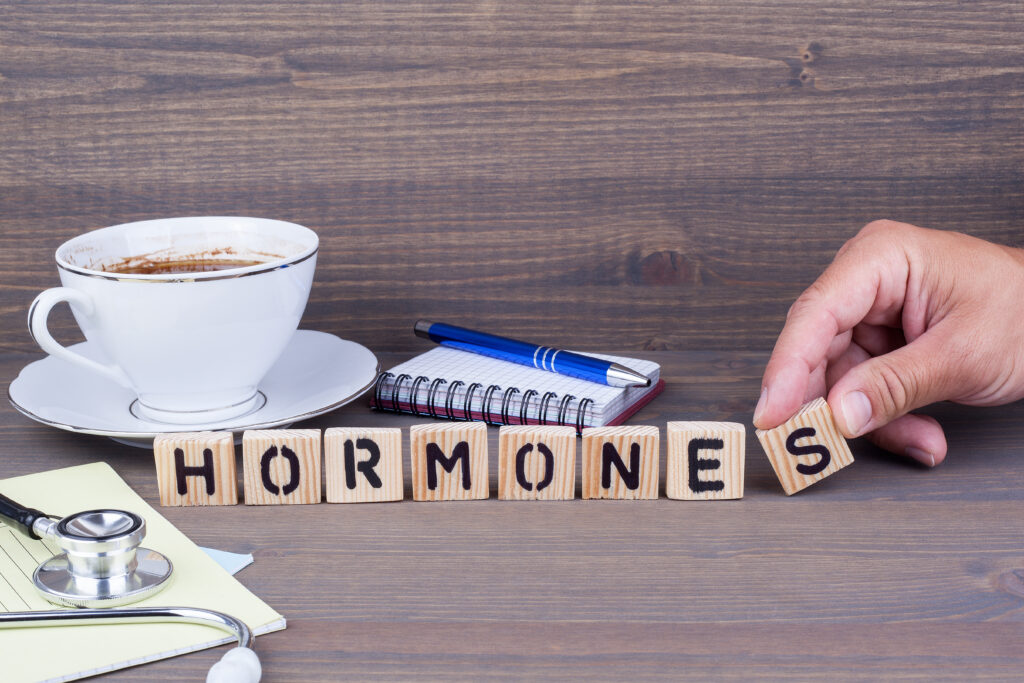Future health is influenced by the choices made today, including diet, exercise, sleep habits, stress, and hobbies or other lifestyle choices. Taking control of your health now to prevent issues in the future is crucial for women.
Less than 2.5% of publicly funded research is currently devoted to the whole area of female health conditions, so tests, treatments or new medicines are not becoming available rapidly enough. In most cases women must manage their symptoms as best they can with whatever lifestyle changes, medicines and therapies are available to them.
If you’re between the ages of 40 and 50, you have a special opportunity to improve future health through the decisions made today and by adopting good preventative practices such as seeking support from a gynaecologist, general practitioner and perimenopause expert to address ways of efficient and effective management of health risk factors through lifestyle changes.
You should also include a preventative health assessment in that plan. Why? Because as your body moves through various changes and approaches perimenopause and menopause, it is vital to understand the effects these changes will have on your body and how to control them and in turn reduce risk of developing certain health diseases.
We hope this blog will provide information on the health issues faced by women today and what preventive measures are available to them.
Health risks for women after the age of 40
Coronary Heart Disease
Coronary heart disease (CHD) is the main cause of heart attacks. In the UK, CHD kills more than twice as many women as breast cancer. It was the single biggest cause of death for women worldwide in 2019 (BHF.org.uk, 2022). Despite this, it’s often considered a man’s disease.
There are more than 830,000 women in the UK living with CHD, and sadly, around 80 women die from a heart attack every day in the UK – almost 30,000 women every year (BHF.org.uk, 2022a). That is almost three times as many who die from breast cancer.
But despite these sobering statistics, many women are unaware that they might be at risk of heart disease. As a woman, your hormones might give you some protection from CHD in your pre-menopause years, but after the menopause, the risk rises and continues to rise as you get older.
Lung Cancer
Lung cancer incidence rates for women rose by 32% in the UK between 1993-1995 and 2016-2018. Lung cancer incidence rates for men fell by 34% in the UK between 1993-1995 and 2016-2018 (Cancer Research UK, 2022). The reasons for this discrepancy and increasing rates in non-smokers is unknown.
Low dose CT scanning is the gold standard for screening for lung cancer. Chest x-rays are too insensitive and by the time a lung cancer appears on a chest x-ray it will almost certainly have already spread making chance of a cure very low.
Osteoporosis
Estrogen is a strong protector of bone density and therefore the onset of the menopause with lowering of estrogen levels often leads to a rapid thinning of bone density and increased risk of fracture that is associated with osteoporosis.
This is at both the spine with vertebral fractures causing severe pain, loss of height and curvature of the spine, and also the hip. Fracture of the hip is a major cause of hospital admission in elderly women with high mortality resulting from the associated immobilisation and complications of surgery (hip replacement). Taking HRT can prevent these changes and maintain bone density.
Taking control of your health
A proactive approach to health has to begin early. There are many diseases which will not manifest symptoms until after the disease has already progressed.
It has been found that women experience the symptoms for the diseases mentioned earlier differently to men. Their symptoms are often milder, and they can arise at a later stage of the illness.
Heart disease in women often goes undetected, therefore the damage caused can be more advanced and outcomes can be poorer than for men. Some tests used to diagnose heart disease are also less accurate in women than they are in men.
Women may experience a heart attack with no symptoms of chest pain. They may experience nausea or vomiting, which are oftentimes confused with acid reflux or the flu. As a result of that, women often do not get diagnosed correctly and then experience worse complications later.
Clinicians believe that the decline in bone density and its complications solely affect postmenopausal women, which may create health disparities. However, osteoporosis and its complications affect both genders but at different ages and rates. Osteoporosis is four times more common in women than in men, but some evidence indicates that men tend to have more osteoporosis-related complications.
When talking to a doctor you always have the option of discussing these issues and any other questions you may have and also work on creating a plan for the future of improving lifestyle habits.
It’s crucial to understand that the years between 40 and 50 are the cornerstone for your future health; collaborate with a doctor to make sure you are laying a solid foundation.
Tests and Health Screenings for Women
During an annual consultation, more tests and health screenings are frequently included for women beyond the age of 40. As you age, make sure to have all the necessary women’s health tests performed by consulting with your gynaecologist or general practitioner. They will be able to walk you through what additional tests may be required and explain their significance.
Some of these tests may be familiar to you, but others completely new:
- Annual exam: Every year you should have an exam with your going over your full health and should include a breast exam.
- Pap smear: Based on previous results and your age a pap smear may be recommended to be done regularly.
- Mammogram: Without a family history of cancer, women should start having mammograms included in their annual check-ups from their early 40s. However, earlier breast cancer screenings may be recommended if you have a history of breast cancer in your family.
- Lipid screening: This is a type of blood test, that is used to look at your cholesterol levels, and should also be done every five years, or more frequently if there is indication that your cholesterol level is too high.
- Thyroid scan: Between the ages of 40 and 50, many women experience symptoms of weariness, increased weight gain, and depression; these conditions may occasionally be brought on by an overactive or underactive thyroid. A blood test targeting your thyroid will be able to show if there are any abnormalities there.
- Fasting blood sugar diabetes test: Diabetes tests should be carried out regularly too, as risk of developing diabetes does increase after the age of 40 among both genders.
Understanding Women’s Hormones
Many older women lament their body changes and mood swings as a result of their altering hormone levels. Here are a few of the major hormones found in women’s bodies, along with an explanation of how each hormone affects daily life:
Estrogen: Apart from its role in childbearing, oestrogen also has a role in controlling cholesterol, preserving bone health, and affecting the heart, skin, brain (including mood), and other body tissues.
Progesterone: Low progesterone can cause abnormal uterine bleeding, irregular or skipped periods, and spotting in females.
Testosterone: A woman’s sex drive, bone density, and muscle strength are all influenced by the small amounts of testosterone produced in the ovaries and adrenal glands and released into the bloodstream.
Some of the symptoms that women over 40 encounter can be attributed to hormonal imbalances, but lifestyle choices are frequently to blame for the changes in women’s bodies and energy levels.
What You Can Do to Optimise Your Health
The years between 40 and 50 represent a special time. In addition to dealing with life’s daily challenges, your body is getting ready to go through the perimenopause or the menopause. Making healthy choices now can help manage stress, enhance general health, and lessen symptoms brought on by the changes in your body later.
This health gap is what inspired Echelon Health to develop the Cullinan Assessment – building it from the ground up with women in mind.
The Cullinan Assessment is dedicated to women who are 40 years old or above and is designed to detect signs of early disease associated with this stage of life, along with those diseases that are the leading causes of premature death in women – coronary heart disease, lung disease, breast cancer and ovarian cancer, and osteoporosis.
It doesn’t consider statistical analysis, but rather looks inside the body of the woman in incredible detail to determine confidently if there are any signs of early disease.
The Cullinan Assessment is designed as a holistic experience, with body and soul in mind. In addition to the highly detailed health assessment, our clients benefit from a chauffeur driven round trip transfer within 100 miles of our Harley Street clinic and an overnight stay at The Mandarin Oriental Hyde Park, which includes a CBD oil deep relaxation massage.
Combining the best imaging technology through our CT, MRI and ultrasound scans and years of experience among our medical experts, Echelon Health are able to detect up to 95% of preventable causes of death among women, in one comprehensive assessment.
The following tests are part of the Cullinan Assessment:
- Comprehensive bloods + Hormonal Profile + cancer markers
- Digital mammogram
- Transvaginal Ultrasound
- ECG
- CT Coronary angiogram
- CT Chest
- CT Bone Density
- Full Body Mole Check
The Cullinan assessment is a pioneering preventative health assessment, dedicated to women, allowing them to take control of their health and gain an unparalleled insight into their body at a crucial stage of their lives.
For more information about the Cullinan Assessment, or other assessments offered at Echelon Health please do not hesitate to contact us and we will be delighted to help you with any questions you may have.
Sources:
BHF.org.uk (2022). Twice as deadly as breast cancer. Available at: https://www.bhf.org.uk/informationsupport/heart-matters-magazine/medical/women/coronary-heart-disease-kills (accessed 26/09/2022)
BHF.org.uk (2022). UK factsheet August 2022. Available at: https://www.bhf.org.uk/-/media/files/research/heart-statistics/bhf-cvd-statistics—uk-factsheet.pdf (accessed 26/09/2022)
Cancer Research UK, (2022). Lung Cancer Incidence Rates. Available at: https://www.cancerresearchuk.org/health-professional/cancer-statistics/statistics-by-cancer-type/lung-cancer/incidence#heading-Two (accessed 26/09/2022)



